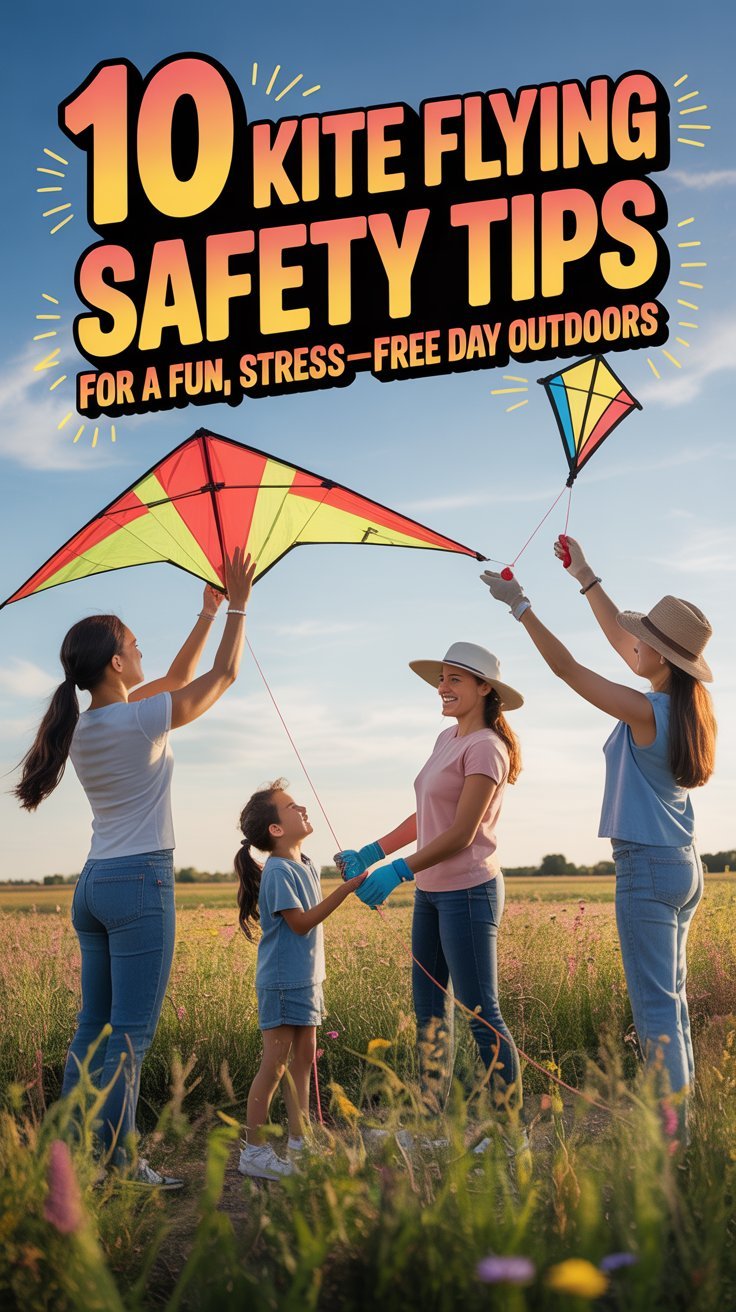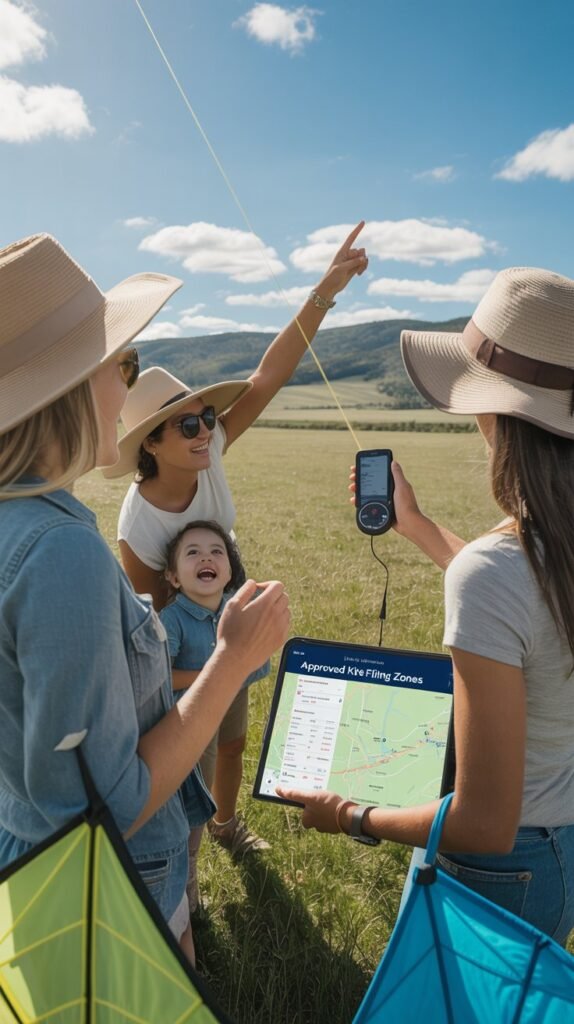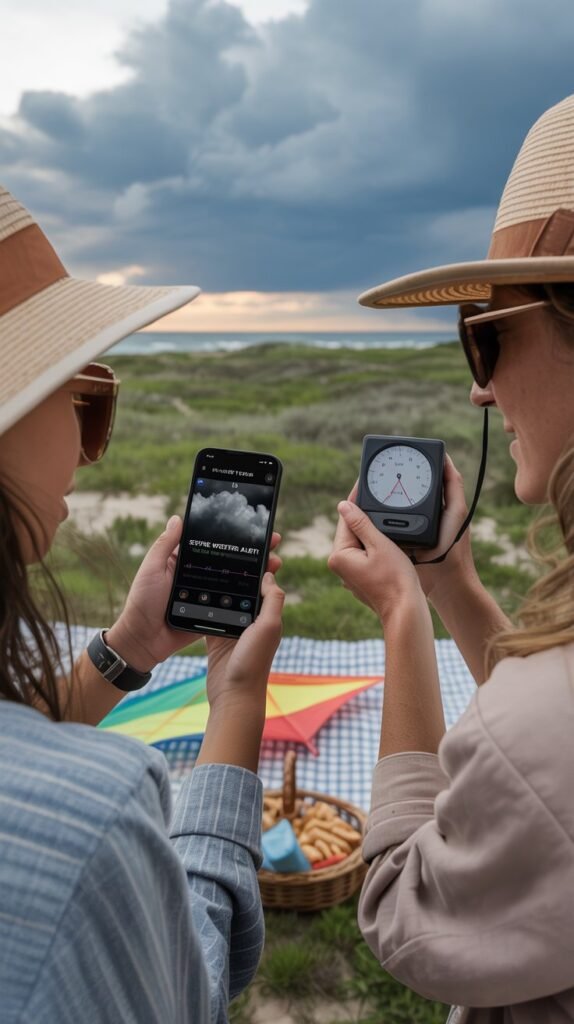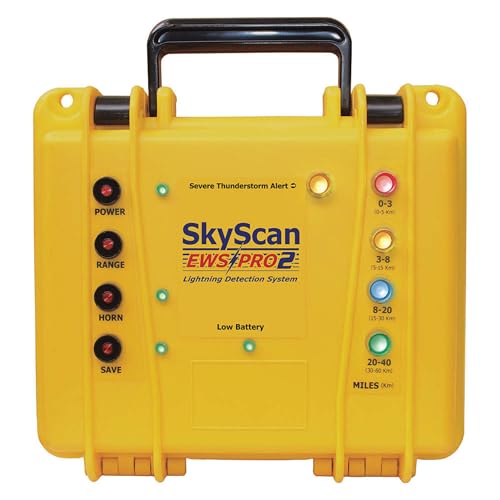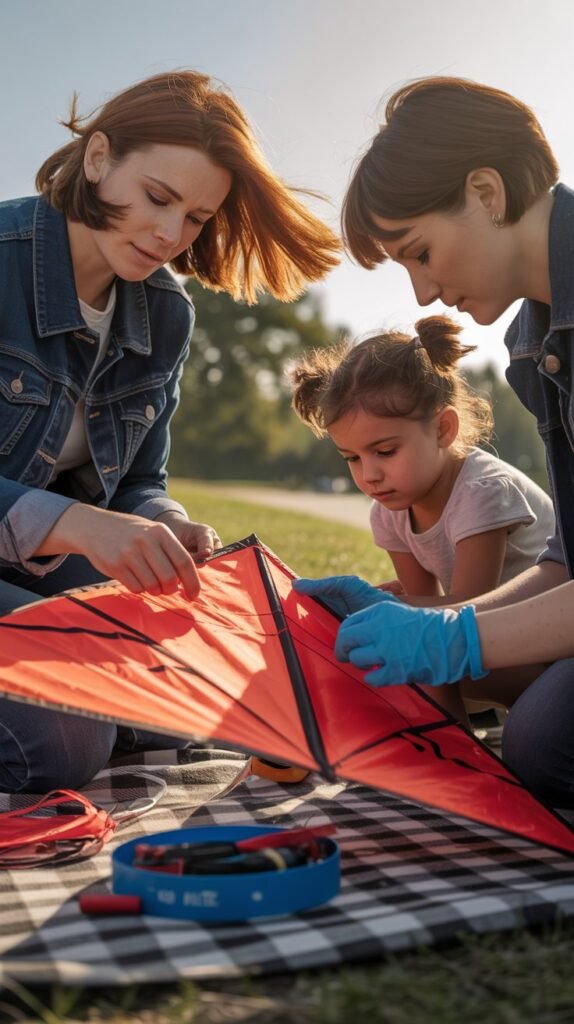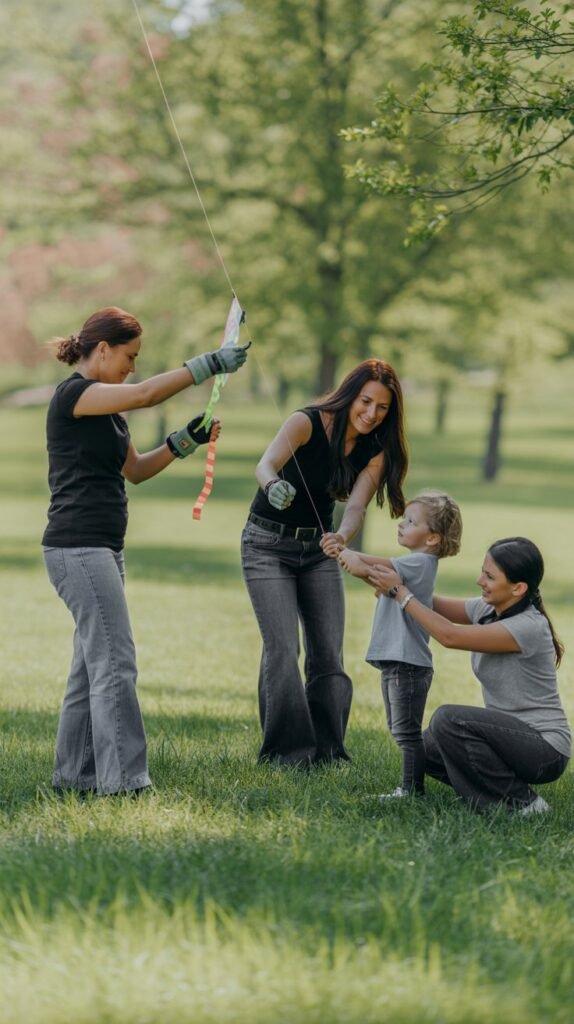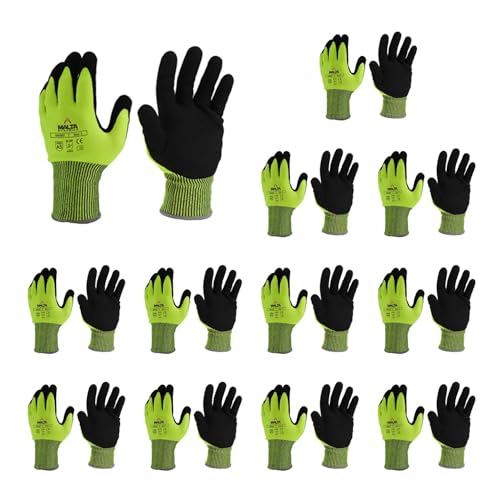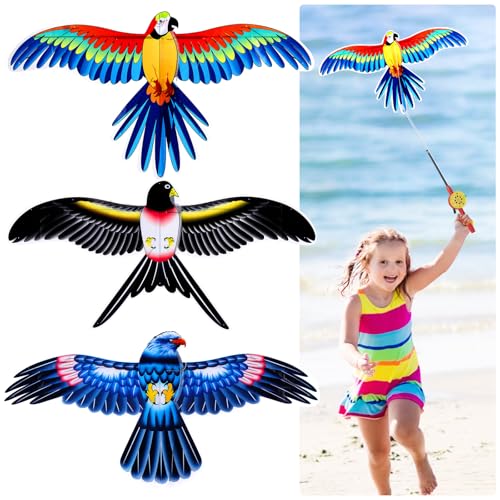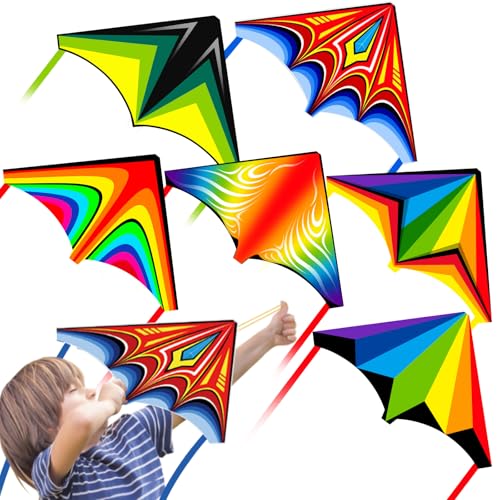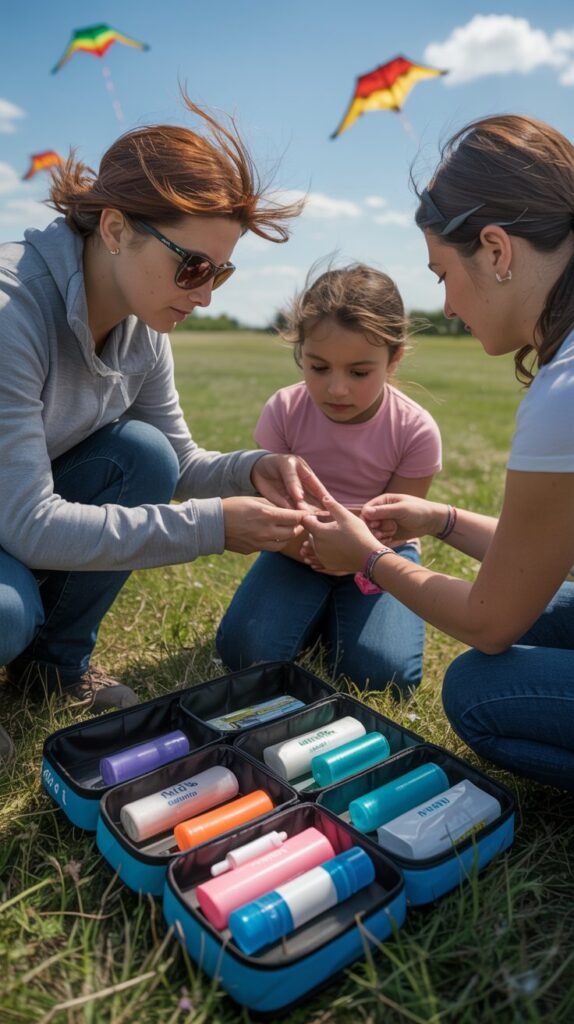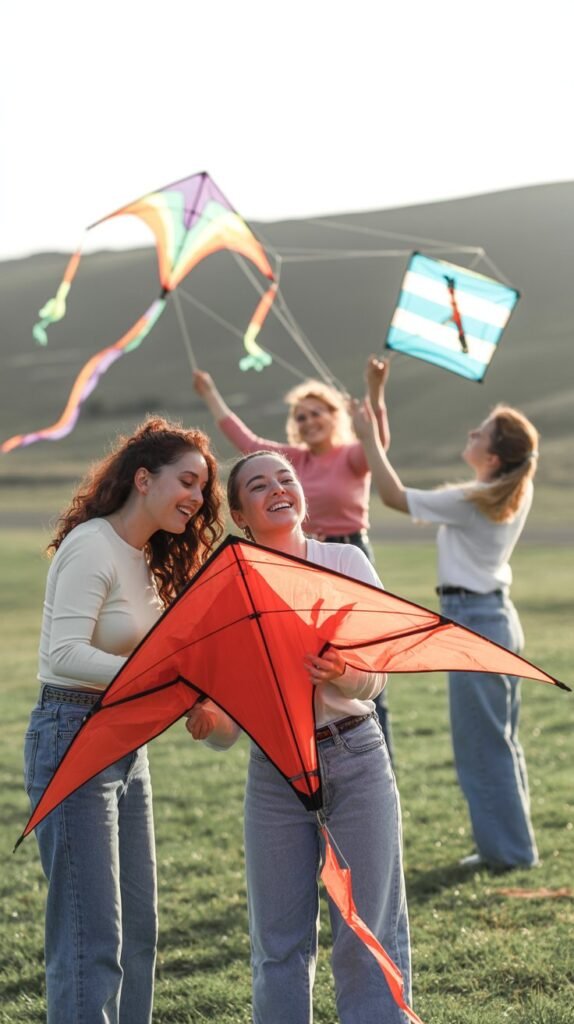There’s something magical about watching a kite catch the perfect breeze and soar majestically overhead! However, behind every successful kite flying adventure is a foundation of smart safety practices that protect both flyers and bystanders while maximizing enjoyment.
The good news? Kite safety isn’t complicated! With some basic knowledge and simple precautions, you can prevent common mishaps and ensure your day of aerial fun remains carefree from start to finish. Let’s explore the essential safety tips that experienced kite enthusiasts swear by for trouble-free flying!
1. Choose Safe Flying Locations
The most important safety decision happens before your kite even leaves its bag. Selecting an appropriate flying location dramatically reduces risks and sets the stage for a successful outing.
For optimal safety, always choose locations with:
- Obstacle-Free Airspace: No power lines, telephone wires, or electrical towers overhead or downwind
- Adequate Open Space: At least 100 feet in all directions from trees, buildings, and other structures
- Appropriate Distance: Minimum of 2 miles from airports or landing strips
- Clear Ground Conditions: Free from hazards like holes, rocks, or debris that could cause trips or falls
- Legal Permission: Designated kite-flying areas or places where you have permission to fly
What makes location selection crucial:
- Power Line Danger: Kites tangled in power lines can conduct electricity down the line to the flyer
- Rescue Attempts: Most serious kite injuries occur not during flying but during attempts to retrieve kites from dangerous locations
- Space Requirements: Larger kites and stronger winds require more room for safe control and maneuvering
- Wind Turbulence: Buildings and trees create unpredictable wind patterns that can suddenly slam kites to the ground
- Aviation Interference: Kites can pose serious hazards to aircraft in landing or takeoff patterns
Before flying, take a full 360-degree survey of your location, looking not just for current hazards but anticipating where your kite might drift if winds change or lines break. Many experienced flyers scout locations in advance, visiting potential flying spots without kites first to properly assess conditions and potential hazards.
Remember: No kite is worth risking safety. If you have any doubts about a location, find a different spot!
2. Monitor Weather Conditions
Successful kite flying requires more than just “some wind.” Understanding and monitoring weather conditions protects both you and your equipment while ensuring the best flying experience.
Essential weather monitoring includes:
- Wind Speed Assessment: Using an anemometer or wind meter for accurate readings
- Changing Conditions Awareness: Checking radar and forecasts for approaching storms
- Visual Sky Monitoring: Regularly scanning for developing clouds or changing conditions
- Temperature Considerations: Preparing for heat exposure during extended flying sessions
- Weather Alert Systems: Enabling notifications for sudden changes in conditions
What makes weather monitoring critical:
- Lightning Danger: Kites can attract lightning strikes, creating extreme danger to flyers
- Wind Thresholds: Each kite type has optimal and maximum wind speeds for safe control
- Sudden Gusts: Unexpected wind increases can pull small children off their feet or cause line burns
- Thermal Development: Midday heating can create unpredictable rising air currents that destabilize kites
- Downbursts: Approaching storms can create dangerous straight-line winds before rain begins
For optimal safety:
- Always check weather forecasts before heading out
- Establish personal “safety thresholds” for different weather conditions
- Set a regular schedule for rechecking conditions (every 30 minutes is recommended)
- Learn to recognize visual signs of changing weather like darkening clouds, sudden temperature drops, or shifting wind directions
- Have a quick-pack plan ready for rapidly deteriorating conditions
Remember: Weather conditions can change rapidly. The clear blue skies that greeted your arrival can transform within minutes, so continuous monitoring throughout your outing is essential for safety.
3. Inspect Kite and Line Condition
The integrity of your kite and flying line directly impacts safety. A thorough pre-flight inspection takes just minutes but can prevent dangerous equipment failures during flight.
Your essential inspection checklist:
- Frame Assessment: Checking spars and spreaders for cracks, splits or stress damage
- Covering Examination: Looking for tears, stretched areas, or separated seams in the kite’s surface
- Bridle Inspection: Verifying all attachment points are secure and properly aligned
- Line Condition Review: Running entire length of line through fingers to feel for fraying or weak spots
- Connection Point Check: Testing the security of all knots and connection hardware
What makes equipment inspection crucial:
- Sudden Failures: Damaged kites can break apart unexpectedly in flight, causing injury from falling parts
- Line Breaks: Weakened flying lines can snap under tension, causing dangerous whipping motions
- Control Loss: Bridle issues can make kites unresponsive or unpredictable, leading to crashes
- Repair Opportunity: Early detection of minor damage allows for repairs before they become serious hazards
- Equipment Longevity: Regular inspection protects your investment in quality kites
For thorough inspection:
- Conduct checks in good lighting where details are visible
- Establish a consistent inspection pattern so nothing gets missed
- Keep a repair kit handy for addressing minor issues on-site
- Document recurring problem areas to monitor over time
- Consider the age and usage history of equipment when assessing risks
Remember: A kite that’s been stored for extended periods needs especially careful inspection before flying. Materials can degrade even in storage, and pests can damage both fabric and structural elements.
4. Practice Proper Line Handling
Proper handling of kite line prevents the most common kite-flying injuries while maximizing control and enjoyment. The string connecting you to your soaring creation requires specific techniques to manage safely.
Essential line handling practices:
- Wearing Gloves: Using lightweight protective gloves, especially in stronger winds
- Proper Winding: Utilizing appropriate winders rather than wrapping around hands or arms
- Controlled Release: Feeding line out smoothly rather than in sudden jerks
- Tension Awareness: Maintaining appropriate pressure to feel the kite’s movement
- Entanglement Prevention: Keeping line from wrapping around body parts or bystanders
What makes line handling crucial:
- Line Burns: Improperly managed line can cause painful friction burns as it slides through fingers
- Cuts and Lacerations: Certain line types, especially braided or Kevlar, can cause deep cuts
- Entanglement Risks: Line wrapped around fingers, wrists or necks can tighten dangerously
- Control Precision: Proper handling techniques improve your ability to control the kite’s flight
- Quick Response Capability: Good handling practices allow faster reaction to changing conditions
For optimal safety:
- Use appropriate line strength for your kite and wind conditions
- Maintain awareness of line position relative to yourself and others at all times
- Learn to feel tension changes through the line that indicate changing wind conditions
- Practice controlled release and retrieval techniques before attempting more advanced maneuvers
- Keep line organized even during active flying to prevent dangerous tangles
Remember: Never wrap kite line around fingers, hands, wrists, or other body parts, even temporarily. The sudden pull of a kite caught in a strong gust can tighten line with enough force to cause serious injury before you can react to release it.
5. Maintain Safe Distances
One of the most overlooked aspects of kite safety involves maintaining appropriate spacing between flyers, spectators, and environmental features. Proper positioning prevents line tangles, collision injuries, and conflicts with others enjoying the same space.
Essential distance guidelines:
- Between Flyers: Maintaining at least 50 feet between individual kite flyers
- From Spectators: Keeping a minimum 25-foot buffer zone around your flying area
- Line Crossing Prevention: Positioning to avoid other kites’ flight paths and line interference
- From Obstacles: Staying well away from trees, playground equipment, and other fixed objects
- Recovery Space Planning: Allowing adequate room for kites that might suddenly dive or crash
What makes distance management crucial:
- Line Entanglement: Crossed lines can cause dangerous cutting, burning, or kite damage
- Collision Injuries: Kites can cause significant impact damage, especially to eyes and faces
- Control Zone Needs: Each flyer requires adequate space to maneuver and respond to wind shifts
- Public Courtesy: Appropriate spacing respects others’ enjoyment of shared outdoor spaces
- Emergency Response Room: Proper spacing allows movement for addressing unexpected situations
For optimal safety:
- Arrive early to select positioning with adequate spacing
- Communicate with other flyers to coordinate flight areas and patterns
- Designate clear spectator zones separate from active flying areas
- Consider wind direction when positioning, allowing downwind drift room
- Be willing to relocate if conditions change or areas become crowded
Remember: Kites can cover distance surprisingly quickly when caught in strong gusts or during controlled maneuvers. What seems like adequate spacing can disappear in seconds, so always err on the side of extra room between flyers.
6. Secure Children and Pets
Children and pets require special safety considerations during kite flying activities. Their smaller size, developing coordination, and unpredictable movements create unique risks that need specific management strategies.
Essential child and pet safety practices:
- Appropriate Kite Sizing: Matching kite size and type to the child’s weight and strength
- Continuous Supervision: Maintaining constant adult monitoring of children’s flying
- Buddy Systems: Pairing adults with young children for tandem flying when appropriate
- Pet Control: Keeping dogs leashed and away from flying areas
- Clear Boundaries: Establishing and enforcing safety zones for both children and pets
What makes child and pet management crucial:
- Pull Risk: Even medium-sized kites can generate enough pull to lift small children briefly off the ground
- Line Dangers: Children may not recognize the cutting or burning potential of kite lines
- Chase Instinct: Dogs often instinctively pursue moving objects like kites
- Entanglement Risk: Both pets and children can become entangled in loose kite line
- Attention Spans: Children may abandon kites suddenly without properly securing them
For optimal safety:
- Practice with smaller kites first before allowing children to fly larger models
- Teach proper handling techniques at age-appropriate levels
- Consider safety harnesses for younger children flying larger kites
- Designate a “pet zone” away from active kite flying areas
- Create clear rules about line handling, running, and appropriate behavior
Remember: Children should never be left unsupervised with kites, regardless of perceived wind conditions or kite size. Wind conditions can change suddenly, and even smaller kites can cause injuries if mishandled.
7. Use Appropriate Sun Protection
Kite flying typically happens in open areas with direct sun exposure, often for extended periods. Comprehensive sun protection isn’t just about preventing sunburn—it’s essential safety equipment for comfortable, healthy outdoor enjoyment.
Essential sun protection elements:
- Broad-Spectrum Sunscreen: Applying SPF 30+ to all exposed skin before flying
- Reapplication Schedule: Refreshing sun protection every two hours or after sweating
- Eye Protection: Wearing quality sunglasses that block 100% of UV rays
- Head Covering: Using wide-brimmed hats secured with chin straps for wind conditions
- Shade Access: Creating or locating shaded rest areas for breaks from direct exposure
What makes sun protection crucial:
- Extended Exposure: Kite flying often involves longer outdoor sessions than planned
- Reflection Factors: Open fields provide minimal sun blocking while surfaces can reflect UV rays
- Wind Masking: Cooling breezes can hide the sensation of sunburn until damage is done
- Attention Distraction: Focus on kites often leads to forgetting reapplication schedules
- Dehydration Risk: Sun exposure increases water loss and heat-related illness potential
For optimal protection:
- Prepare all sun protection before arriving at your flying location
- Set timer reminders for sunscreen reapplication
- Choose sun-protective clothing with UPF ratings when possible
- Bring portable shade options like umbrellas or canopies
- Schedule flying sessions for earlier morning or later afternoon when possible
Remember: The most common kite flying injury isn’t from the kite itself but from sun exposure. The combination of reflective ground surfaces, open skies, and attention focused upward creates perfect conditions for severe sunburn if protection is neglected.
8. Be Prepared for First Aid Needs
Being prepared to handle minor injuries quickly and effectively is an essential part of kite flying safety. A well-stocked, activity-specific first aid kit allows you to address common kite-related incidents immediately.
Essential first aid preparations:
- Specialized Supplies: Stocking items for kite-specific injuries like line cuts and eye irritation
- Accessible Placement: Keeping first aid kit visible and readily available during flying
- Knowledge Preparation: Knowing how to treat common kite-related injuries
- Location Awareness: Identifying nearest medical facilities before flying in unfamiliar areas
- Communication Plan: Ensuring all group members know emergency procedures
Typical kite flying injuries requiring preparation:
- Line Burns: Friction injuries from line sliding rapidly through hands
- Cuts: From broken kite parts or certain types of flying line
- Eye Irritation: From dust, debris, or direct contact with kite parts
- Sprains: From falls while running with kites or on uneven terrain
- Sunburn: From extended exposure in open flying areas
- Insect Stings: Common in the fields and open areas ideal for kite flying
For optimal readiness:
- Customize your kit based on your specific flying location and conditions
- Include extra supplies for the most common kite-related injuries
- Refresh supplies regularly, checking expiration dates
- Consider basic first aid training for all regular flyers
- Keep emergency contact information with your kit
Remember: The most effective safety strategy is prevention, but being prepared for injuries allows immediate response that can significantly reduce their impact and get everyone back to enjoying the day quickly.
9. Fly Within Your Skill Level
Matching your flying activities to your actual skill level is a fundamental safety practice that prevents many accidents and frustrations. Understanding and respecting your current abilities ensures positive experiences while creating a foundation for advancement.
Essential skill-appropriate practices:
- Honest Self-Assessment: Realistic evaluation of your experience and capabilities
- Proper Progression: Moving gradually from simpler to more complex kites and techniques
- Appropriate Kite Selection: Choosing designs that match your handling abilities
- Controlled Conditions: Flying in less challenging environments until skills develop
- Supervision Seeking: Learning new techniques with experienced guidance
What makes skill-level awareness crucial:
- Control Challenges: Advanced kites can generate surprising power and unpredictable movements
- Reaction Speed Requirements: More complex kites demand faster response times
- Technical Knowledge Needs: Advanced flying requires understanding of aerodynamic principles
- Equipment Management: Multiple lines and specialized controls require developed coordination
- Recovery Techniques: Higher performance kites need specific recovery methods for problems
For optimal skill development:
- Start with stable, forgiving kite designs that offer success experiences
- Practice basic skills to automaticity before advancing to more difficult models
- Seek guidance from experienced flyers when trying new techniques
- Join kite clubs or attend festivals to learn in supported environments
- Be willing to return to simpler kites in more challenging conditions
Remember: Even experienced kite flyers return to basic models in certain conditions. There’s no shame in flying simpler kites—the goal is enjoyment and safety, not constantly pushing limits that might lead to frustrating or dangerous situations.
10. Practice Proper Packing and Storage
Safety doesn’t end when you finish flying. Proper packing and storage practices protect equipment integrity, prevent future hazards, and ensure your kites are ready for safe flying on your next outing.
Essential packing and storage practices:
- Proper Folding Techniques: Following manufacturer guidelines for each specific kite
- Line Management: Winding string without twists or tangles that could create future hazards
- Condition Assessment: Checking for new damage before storage to prevent surprises next time
- Moisture Control: Ensuring kites and equipment are completely dry before long-term storage
- Protective Containment: Using appropriate cases or bags that prevent crushing or puncturing
What makes proper storage crucial:
- Structural Integrity: Incorrect folding can permanently damage spars or create stress points
- Material Degradation: Improper storage conditions can weaken fabric, lines, and connections
- Mold Development: Moisture trapped in stored kites can create health hazards
- Future Safety Issues: Unaddressed minor damage often becomes major during storage
- Equipment Longevity: Proper care significantly extends the life of quality kites
For optimal storage practices:
- Develop a consistent end-of-flying routine that includes inspection and proper packing
- Invest in appropriate storage solutions designed specifically for your kite types
- Keep repair supplies with storage equipment to address issues before they’re forgotten
- Store kites in climate-controlled environments when possible
- Label kites with last inspection date and any noted concerns
Remember: The condition you leave your kite in today directly impacts the safety of your next flying experience. Taking a few extra minutes for proper packing and storage is an investment in both equipment longevity and future safety.
Conclusion: Soaring Safely for Maximum Enjoyment
Following these ten safety principles creates the foundation for countless joyful kite flying adventures. By incorporating these practices into your regular routine, safety becomes second nature—allowing you to focus on the pure pleasure of watching your kite dance against the sky.
The beauty of kite safety is its simplicity. Most precautions require minimal effort but yield maximum protection, preventing the common incidents that can transform a wonderful outing into a stressful experience. These safety habits enhance rather than restrict your enjoyment, creating confidence that allows true relaxation.
Remember that safety practices evolve with experience. As you become more familiar with different kite types, flying locations, and weather conditions, you’ll develop personalized adaptations of these principles that work best for your specific situation. The core goals remain consistent: protect yourself, safeguard others, and preserve your equipment.
By prioritizing safety from the start, you’re not just preventing problems—you’re actively creating the conditions for optimal enjoyment. There’s a special satisfaction in watching your kite soar freely, knowing you’ve taken all the right steps to ensure everyone’s wellbeing.
So gather your safety-checked kites, head to your carefully selected location, and let your spirits soar along with your colorful creations in the sky. With proper preparation and awareness, your kite flying adventures will create beautiful memories unmarred by preventable mishaps—the perfect combination of exhilaration and peace of mind.

